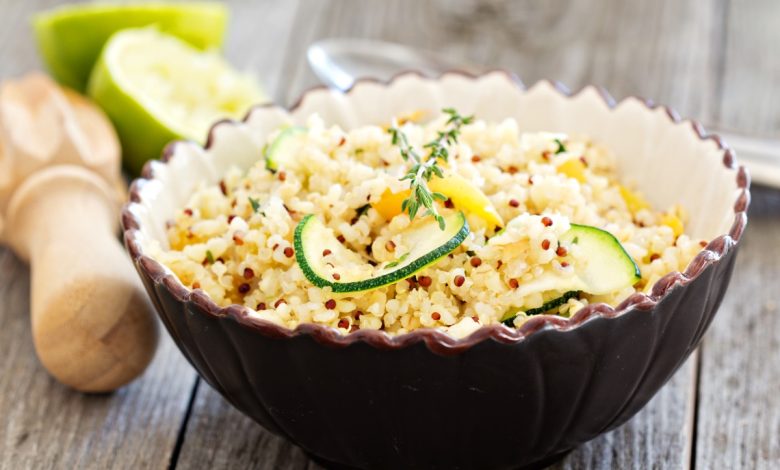Protein substitute grains: the best foods that are better than meat

Protein substitute grains: Whole grains are a healthy source of carbohydrates and contain critical nutrients like B vitamins, iron, and even plant-based protein.
Though animal products like red meat, poultry, and fish are probably the first foods that come to mind when you think of protein, certain grains can also deliver a substantial amount of the macronutrient, which serves as the building blocks for bones, muscles, and skin.
Eating adequate protein also supports healthy immune function and a robust metabolism.
Protein substitute grains: Grains certainly won’t make up the bulk of your protein intake, but high quality starches can contribute to your daily protein goal.
Here are 4 grains that can add a surprising amount of plant-based protein to your plate.
Stay with this section of Medicinal plants in the health and beauty section of Eternal Pen magazine.
Protein substitute grains
1. Quinoa
Protein substitute grains: Though technically a seed rather than a grain, quinoa tends to be categorized as a high-protein whole grain.2 The fiber-rich and naturally gluten-free ingredient has long been consumed in South America.
Mild in flavor and nutty in texture, quinoa is versatile. Use it as the base of a vegetarian grain bowl, sprinkle it into leafy green salads, or enjoy it much like classic oatmeal, warmed up with milk and topped with nuts, seeds, and fresh fruit.
One cup of cooked quinoa contains:3
- Calories: 222
- Carbohydrates: 39 grams (g)
- Fiber: 5 g
- Protein: 8 g
- Fat: 5.5 g
2. Wild Rice

Protein substitute grains: Whole grains like brown and wild rice are both great sources of fiber, but the latter grain has a slight edge when it comes to protein content. Denser in texture, wild rice tends to be slightly lower in carbohydrates compared to conventional brown and white rice.
The purple-black grain is also a good source of B vitamins, as well as calcium, iron, magnesium, potassium, phosphorus, and zinc.4
Toss the cooked grain with flavorful ingredients like toasted pine nuts and raisins for a nourishing side dish at lunch or dinner.
One cup of cooked wild rice contains:5
- Calories: 166
- Carbohydrates: 35 g
- Fiber: 3 g
- Protein: 6.5 g
- Fat: 0.5 g
3. Kamut

Protein substitute grains: Kamut is actually a trademarked name for an ancient grain called khorasan wheat. Slightly higher in protein than both common wheat and durum wheat, kamut is grown according to strict regulations. For example, the brand name ancient grain is always grown organic and never genetically modified or mixed with other forms of wheat.6
Kamut grains are longer and thinner than alternatives like farro and barley. Its texture is dense, so it holds up well when added to soups, stews, and casseroles.
One cup of cooked kamut contains:7
- Calories: 227
- Carbohydrates: 47.5 g
- Fiber: 7 g
- Protein: 10 g
- Fat: 1 g
4. Teff

Protein substitute grains: Teff is a staple grain commonly found in East African countries like Ethiopia. The cereal, which has a very fine texture, comes in different colors, including white and reddish brown. While both types of teff contain fiber, calcium, and zinc, the latter variety is slightly higher in the mineral iron.
Research shows that teff is rich in fiber and has a low glycemic index (GI) value. The glycemic index is a tool that demonstrates the degree to which carbohydrate-containing foods raise blood sugar levels. Foods with a lower glycemic index are typically less likely to spike blood sugar levels.
Teff has a high fiber content and low GI value, making the grain is a wonderful option for those looking to stabilize their blood sugar levels, particularly individuals diagnosed with insulin resistance or type 2 diabetes. It’s also free of gluten, so it’s a great choice for those with celiac disease or non-celiac gluten sensitivity.8
Teff flour can be used as the base of injera, a delicious spongy bread that’s widely consumed in Ethiopia, as well as in pastas and porridges.
One cup of cooked teff contains:9
- Calories: 255
- Carbohydrates: 50 g
- Fiber: 7 g
- Protein: 10 g
- Fat: 2 g








